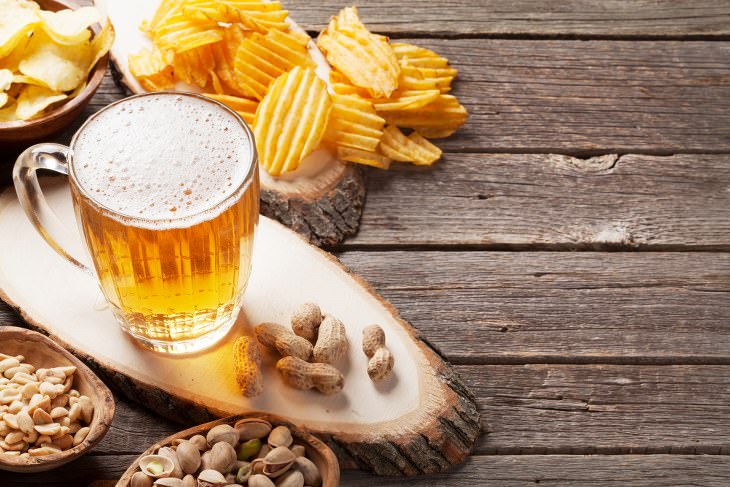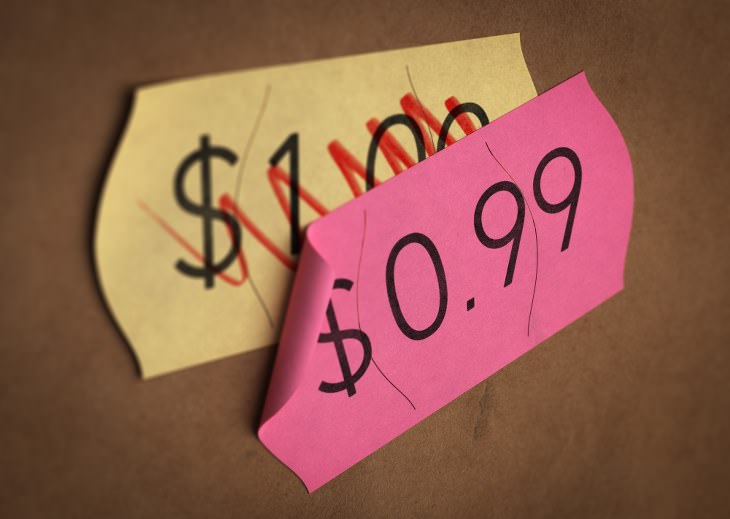

Most people are more than happy when a bar or restaurant offers them some snacks for free. However, the snacks you get for free are usually high in salt, which will make you far more likely to purchase another drink. Similarly, bread and other baked goods will make you hungry enough to order food. There's also evidence that people leave larger tips, when given candy with their bill.
2. Food Coloring
The color of food is often manipulated to trick us into buying a certain product. The colorful fruit loops that many kids love to have for breakfast all taste exactly the same irrespective of their color. Similarly, orange juice manufacturers enhance the juice's color by adding brightly colored mandarin juice and the pigment from orange peel, apart from all of the artificial colorings and flavorings.
3. Size Manipulation
When choosing between a small, medium or large drink at a restaurant, make sure that you're actually getting what you pay for, since often the difference is size is very minimal (unlike the difference in price). Supermarkets also employ a similar trick by reducing the size of a product, while keeping the price the same.

Have you ever noticed that store prices often end with .99? This is because customers tend to automatically disregard anything written after a decimal point. For price-tags above a hundred dollars, this might not mean much, but when your brain tricks you into thinking that a $1.99 product is actually $1, you could end up spending way too much.
5. Using Arbitrary Expiration Dates
It's usually a lot better to use common sense to find out if a product has gone bad or not, rather than to just rely on the expiration date on the packaging. In some countries, such as the USA, there is no regulation on products' expiration dates, and are instead left up to the manufacturer's discretion. As a result, consumers end up throwing away a lot of unspoiled food, and wasting a lot of money to replace it.
6. Hiding Unhealthy Additives
Nowadays, since people are more concerned about the quality of the food they eat, food manufacturers have found a sneaky way of hiding unhealthy substances in product descriptions. In fact, sugar is often disguised under a number of different terms, such as maltodextrin, fructose, glucose, syrup, and sucrose.

The next time you see a product that's supposedly available for a limited amount of time, make sure you check if it's still on sale the next time you visit the store. This is because companies use such strategies to coerce you into making a quick decision, instead of allowing you to take your time and do proper research.
8. Menu Price Formats
Restaurants often eliminate the dollar sign entirely from menus (20 instead of $20) in order to give the impression that customers aren't actually paying for their meals with real money. In fact, there is scientific proof that that people spend more money in restaurants that use such a menu template.
9. Using Misleading Commercials
Think before you buy, since a lot of what you see in a commercial is actually a lie! Car commercials are often filmed without using real cars, for example. Similarly, soap bubbles are often used to make drinks look more refreshing, glue is used in place of milk in cereal advertisements, and a substance called glycerine tends to be used to make various products look cold, wet, and fresh.
10. The Zero Calorie Illusion
It's almost impossible that anything besides water contains absolutely no calories. In fact, US law officially allows anything that contains up to 5 calories to be labeled as such. Additionally, many 'zero calorie' products contain a lot of nasty additives to make up for the traditional components they left out of their recipe.
Don't forget to share this article with your friends and family, so that they don't fall for these cunning ploys either!